Assignment, Week 8: Flash Photography
Theme of the week: "Time stands still"
So far this semester we've focused on low-light photography, and several different techniques to take photos in low light:
- Stabilization techniques (to minimize camera shake blur)
- Stabilization technologies
- Faster shutter speeds (minimize camera shake and motion blur)
- Noise reduction (clean up noise from using high ISO)
All of these techniques have been used in lieau of perhaps the most common way low-light photos are taken - using FLASH!
This is because flash is bad. Using flash usually results in photos like this:
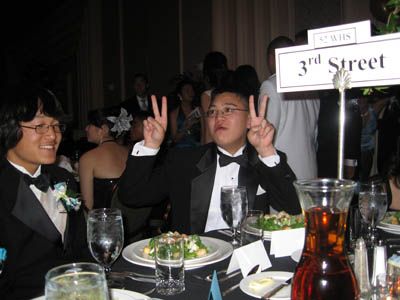
This picture screams out FLASH. It's quite obvious this was taken with a flash, in contrast to how we would've expected a similar photo to look like using available light, and in contrast to how our eyes actually perceive the scene (again, using available light). There are several telltale and signature effects of flash use here:
- Brightness drops off with distance: Because the primary source of illumination for this photo comes from our flash, things that are close to the camera will be very bright, and things far away from the camera will be very dark, since the flash power fades with distance. Here it's clear that the foreground - the main subject, and the table in front of him, is very well illuminated, but the background is almost completely shrouded in darkness. This is in contrast to the actual scene, where the room was evenly lit and this table was just as bright as the table in the background. Note for those in class: no, the guy on the left is not me.
- Bright reflections: The primary illumination from the scene comes from the light being fired from the camera, and as a result all of that light is going to bounce directly back. For very shiny or glossy things, this is going to result in very harsh, bright (and unnatural) reflections, which you can see in the reflections off the "3rd street" sign, the glass of juice, or to a lesser extent, the tuxedo shirts.
- Flat lighting, shadows: Another feature of having light come from only one location (where we fire the flash from) is that the light is extremely one-dimensional. Unlike an actual room where you might have light illuminating the subject from multiple angles (or infinitely many angles, if the lighting is diffused and spread out), for a flash photo all of the light is coming from the flash itself, and thus the lighting is very "flat" - there is not much depth to the photo, everything has a uniform brightness, and there aren't any natural-looking shadows.
- Red eye: Not quite visible in this photo at this small size, but another problem with flash is the "red eye" effect - you'll notice in this photo that the subject's eyes look reddish (real eye color is brown). This is another result of flash - the flash is fired directly at the subject, and is reflected off the back of the retina, and passing through a blood-rich portion of the eye known as the choroid, and comes back out red. Since we fired the flash directly at the subject, that light (now red after reflecting from the eye) will return directly to the flash, causing red to show up in the area where the eyes are.
Because of these reasons, flash is undesirable. But flash doesn't have to be all bad. While you can leave your flash on automatic mode, and get results like the picture above all day, flash can actually be used in a very dynamic fashion to generate results that are as good, or at times even better, than natural lighting.
 Slow synchro flash: Slow synchro flash is the combination (synchronization) of a burst of flash with a regular, long shutter speed. Flash bursts are typically very short - anywhere from 1/1000s to 1/10,000s. Since the flash is intended as the primary illumination for the photo, a shutter speed could be about 1/1000s or shorter (in real life this is set at around 1/60s or at most 1/200s usually, because of hardware limitations). Synchro flash uses the same burst of flash, but also leaves the shutter open for the typical amount of time as a picture without flash. Because the shutter is open for such a long time, it will still capture light from areas such as the background, rendering them visible instead of covering them in darkness. At the same time, the burst of flash illuminates the primary subject and freezes any camera shake or subject motion.
Slow synchro flash: Slow synchro flash is the combination (synchronization) of a burst of flash with a regular, long shutter speed. Flash bursts are typically very short - anywhere from 1/1000s to 1/10,000s. Since the flash is intended as the primary illumination for the photo, a shutter speed could be about 1/1000s or shorter (in real life this is set at around 1/60s or at most 1/200s usually, because of hardware limitations). Synchro flash uses the same burst of flash, but also leaves the shutter open for the typical amount of time as a picture without flash. Because the shutter is open for such a long time, it will still capture light from areas such as the background, rendering them visible instead of covering them in darkness. At the same time, the burst of flash illuminates the primary subject and freezes any camera shake or subject motion.


left: direct flash image at 1/90s, right: slow synchro flash at 1/15s Red Eye Reduction: A way to deal with red eyes in flashes is to use the "Red Eye reduction" flash on your camera. This flash mode fires a "pre flash" at the subject before the actual picture - this has the result of causing the subjects to shrink their pupils (as the bright pre-flash causes their brain to think "Oh noez, this is starting to get bright, I better shirnk my pupil so it takes in less light"). With shrunken pupils, subjects' eyes take in less light, thus minimizing the amount that enters reflects off the back of the retina.
Red Eye Reduction: A way to deal with red eyes in flashes is to use the "Red Eye reduction" flash on your camera. This flash mode fires a "pre flash" at the subject before the actual picture - this has the result of causing the subjects to shrink their pupils (as the bright pre-flash causes their brain to think "Oh noez, this is starting to get bright, I better shirnk my pupil so it takes in less light"). With shrunken pupils, subjects' eyes take in less light, thus minimizing the amount that enters reflects off the back of the retina.
- Non-direct flash: Another technique is to fire the flash from different positions. While most people fire the flash directly at the subject, having an external flash allows more flexibility in where you can aim the flash. Firing the flash at the ceiling, for example, causes the light to bounce off the ceiling, with *some* of this ceiling light reflecting onto the subject, after which *some* of the subject light reflects back to the camera. This tends to produce photos with much more "depth" - the light, spread out over the ceiling, is coming at the subject from all directions in the room, and is not simply one-dimensional as the single direct flash is.
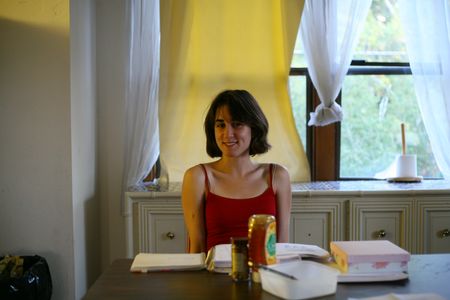
No flash

Direct flash
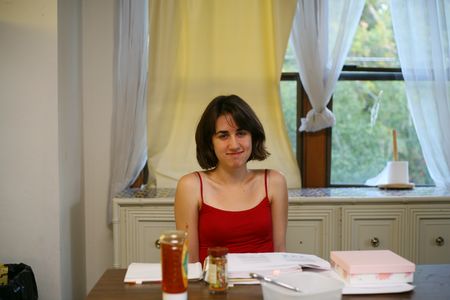
Flash bounced/diffused off the ceiling
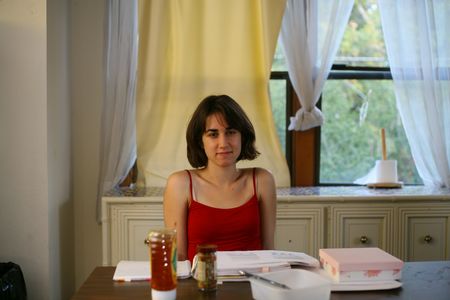
Flash bounced/diffused off the wall
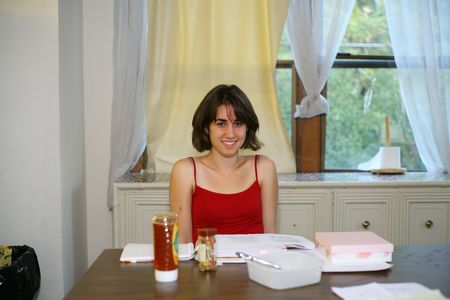
Flash reflected off of portable diffuser
For this week's assignment, we'll be experimenting with flash photography. Rather than use the regular automatic flash, try setting the camera to employ one of the special techniques, such as slow synchro. There is also a theme for this and future assignments - "Time stands still". The idea behind offering a theme is to push you to take photos more creatively, focusing on a theme or certain style, so if you'd like, take a photo of something that represents "Time stands still", whatever that means to you.
Updated: Some inspiration for the "Time stands still" theme... maybe.

Newborn
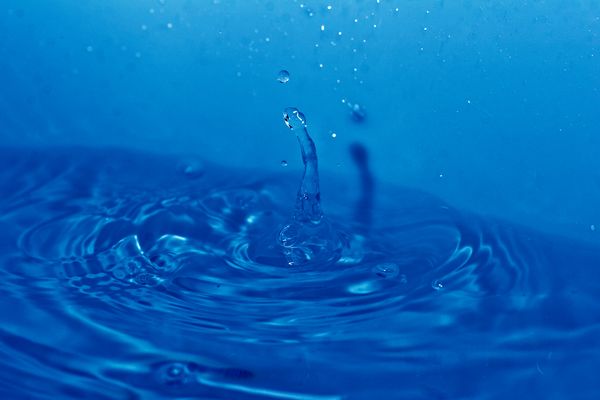
Sink Monster!
Assignment Summary:
- Experiment with flash - take flash photos, and try out other types of flash modes or techniques - (slow synchro, red eye reduction, bouncing, etc).
- You can either email the assignment to me, or upload the files to bspace
- Optional: take a photo related to the theme of the week: "Time stands still"
